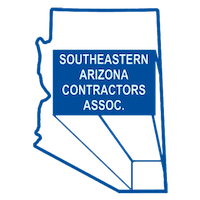Detectable warning mats fall under the jurisdiction of the United States Department of Justice (DOJ) via Americans with Disability Act Accessible Guidelines. The regulations dictate where the placement of warning mats occur. The standards require placement of warning mats at vehicular ways, the edges of transportation platforms, curbs, curb ramps, and near hazardous vehicular ways.
Warning mats are referred to by the Department of Justice as truncated domes and are required anywhere a visually impaired person may encounter a vehicle.
Hazardous Vehicle Ways would be any place that a vehicle crosses a sidewalk, such as a parking lot entrance. Other hazardous vehicle ways include the areas before and after a crosswalk.
Transit Platform Edges
Warning mats are required in part because other types of warning systems, such as grooved lines, are not easily detectable by visually impaired people on sidewalks and roadways. The hard dome shaped warning mat causes an easily identified feeling on the foot even through the soles of shoes.
Thus, public transportation stops such as those for a train require the use of warning mats. At the edge of platforms, warning mats are required so that visually impaired people do not fall onto the tracks. At certain bus stops with high foot traffic, warning mats are also required.
Sidewalks and Curbs
Warning mats are required where there is a ramp, where a sidewalk meets the street, and where curbs indicate a crosswalk. The goal is to help visually impaired people navigate the sidewalk system, find safe places to cross the street, and to warn them when they approach a street or intersection.
According to the Department of Justice, not every corner requires truncated dome warning mats. These devices are required when sidewalks are upgraded or after repairs occur. Additionally, the American with Disabilities Act does not require the placement of a warning mat ramp at every intersection; some intersections are not feasible for crosswalks.
Again, the idea for these mats is that visually impaired people are helped in finding the safest way to walk where they are going. This occurs through the interaction with the smooth surface of a sidewalk and through the detection of truncated domes. The domes act as a signal to disabled people that they have reached an area where it is safe to cross the street or as a warning that they may be near moving traffic.
Truncated Dome Warning Mats
There are three choices that construction companies have when it comes to truncated dome warning mats.
The first is an ADA mat that is cast into the sidewalk. This is appropriate for new construction and repair projects that require a truncated dome warning mat. These ADA pads come in a variety of sizes that range from 2’x2′ to 2’x5′ sections. These are available in Black, Blue, Brick Red, and Yellow.
The second type of ADA mat includes a retrofit mat. This is truncated warning mat that is thinner and designed to be attached to existing sidewalk or concrete. It meets the standards of the ADA and is an affordable option to retrofitting concrete to allow a cast-in-place ADA pad installation. These ADA pads come in a variety of sizes that range from 2’x2′ to 2’x5′ sections. These are available in Black, Blue, Brick Red, and Yellow.
The third type of ADA warning mat is often in the bright yellow ADA color. These mats are made from thermoplastic and contain the truncated dome. These come in a variety of sizes that range from 1″ x 2″ to 2′ x 4′. They also come in Yellow, Black, Blue, Brick Red, and White.
If your project requires truncated dome warning mats,Transline has all three options in stock. If you have questions about which warning mat your project requires, just give us a call. We happily answer all questions.













